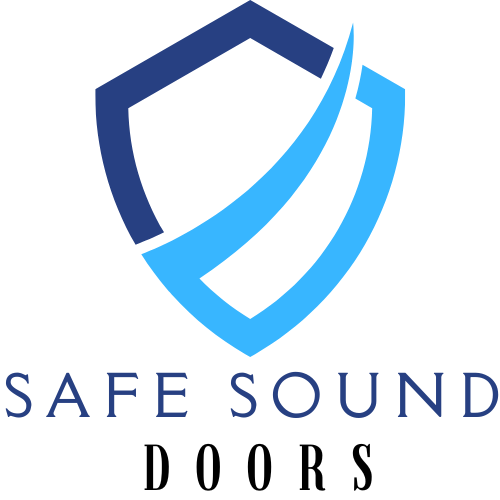Share
How Fire-Rated Doors Help Meet Local Safety Regulations
Estimated Reading Time: 5-7 minutes

In commercial buildings, entertainment venues, and even upscale homes, having the right fire-rated door isn’t just about safety — it’s about passing inspections, avoiding fines, and staying open for business. Local fire codes can be strict, and using the wrong door could cost more than you think.
In this guide, we’ll explain how fire-rated doors meet regulatory requirements, what certifications are most recognized, and how to choose the right configuration for your region.
1. What Is a Fire-Rated Door?
A fire-rated door is built with materials that resist high temperatures, block smoke, and slow the spread of flames. It must be tested and certified to hold up for a specific time — usually 30, 60, 90, or 120 minutes — under standardized fire conditions.
Fire-rated doors are required in many public or commercial spaces, including:
- 🏨 Hotels, hostels, and serviced apartments
- 🎤 Karaoke lounges, cinemas, and clubs
- 🏢 Office buildings and mixed-use developments
- 🏠 Certain residential projects with shared corridors or basements
2. Key Certifications That Matter
Different countries and regions accept different fire testing standards. Here are the most common ones we work with:
- 🇺🇸 UL 10C – Common in the United States and accepted in parts of the Middle East
- 🇬🇧 BS 476 Part 22 – Widely used across Southeast Asia and Commonwealth countries
- 🇪🇺 EN 1634-1 – The European Union fire resistance standard
Tip: Always confirm with your local contractor or project consultant which certification is required for sign-off. If you’re unsure, we’ll help you verify it.
3. Beyond Certification: Labeling and Documentation
Certification alone isn’t enough. Most inspectors will require:
- 📋 A visible rating label on the door or frame
- 📎 Accompanying test reports or certification sheets
- 📦 Photos of production and shipping labeling
We offer all of this with every certified fire door — including pre-labeled packaging, digital documentation, and support for customs clearance if needed.
4. Choosing the Right Door for Your Region
Here’s a quick example of how we match fire-rated doors to regional codes:
- 🇲🇾 Malaysia – BS 476 + BOMBA acceptance
- 🇸🇬 Singapore – BS 476 or EN 1634-1, with SCDF approval
- 🇸🇦 Saudi Arabia – UL 10C preferred
- 🇹🇭 Thailand – BS 476 widely accepted
If your project is in a grey area or mixes requirements, we can produce dual-rated solutions using shared-core materials that meet both UL and BS specs.
5. Fire Safety Plus Soundproofing
The good news? You don’t have to choose between fire safety and acoustic performance. Our doors can be fire-rated and soundproofed at the same time. We combine rock wool cores, intumescent seals, and solid steel structures — without sacrificing STC performance.
Final Thoughts
Fire-rated doors are not just a “tick-the-box” requirement — they’re your license to operate safely and legally. Our team works closely with contractors, architects, and developers to make sure every door meets code, passes inspection, and installs without delay.
🛠 Need help choosing the right fire-rated door for your region? Contact us on WhatsApp and we’ll help you comply with confidence.
